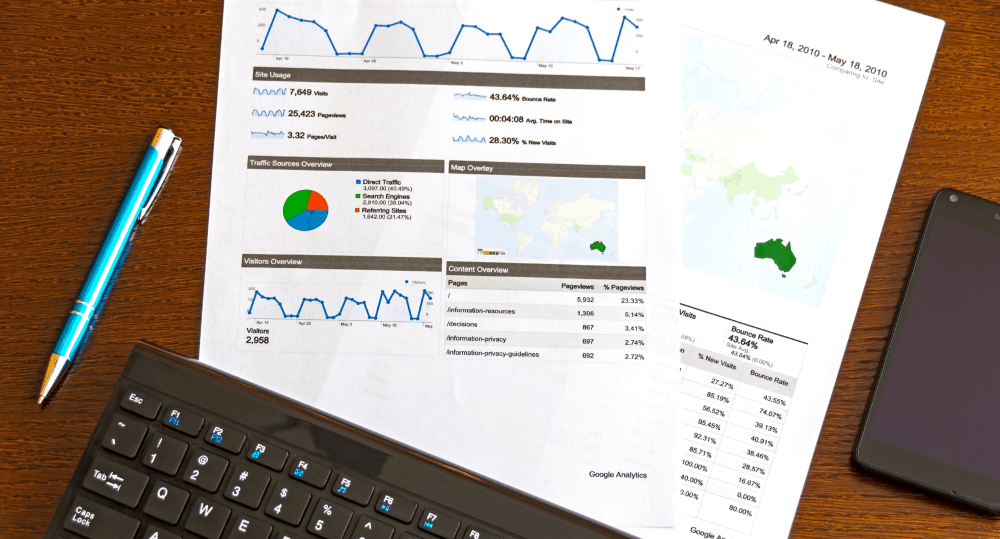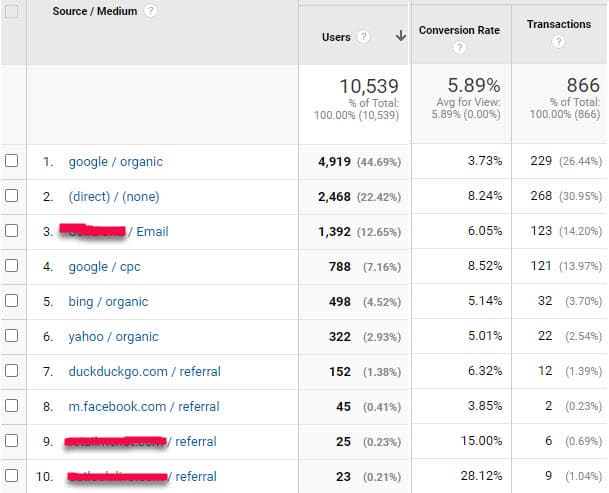How food manufacturers can reduce their Cost of Goods Sold (COGS) costs
Current best practices for teaching food manufacturers to reduce their Cost of Goods Sold (COGS) costs can be broken down […]
Read More »Become a successful marketing consultant: Learn more

This #shorts video is best viewed on mobile:
If you have ever asked what is meant by data-driven marketing, this is the right article for you.
In this helpful article we are going to define data-driven marketing and then provide some real world, timely examples of exactly what is meant by data-driven marketing.
Data-driven marketing is reviewing the individual facts, statistics, or items of information as a result of your customer touch points. This data is analyzed in order to make better decisions for your future marketing strategies.
As we get started and provide some examples that will help you build your own data-driven marketing systems, here is a very helpful article that will clarify the difference between business level metrics and marketing level data and metrics:
Marketing Analytics vs. Business Analytics (helpful examples)
Let's now get into the details of what is meant by data-driven marketing.
Did you know that Google can map-cluster and count searches for "chinese food that delivers near me" and locate the highest density of queries to predict the best places to open a restaurant?
Or did you know that the HealthCare.gov Information Technology (IT) team can identify how many 21-25 years old's registered for insurance as a result of the latest social media campaign?
These are forms of data-driven marketing. And there's a lot of talk about data in today’s environment.
Largely because there is so much of it -- data, that is.
And data hits us from every direction, whether we like it or not.
Data can be overwhelming. So overwhelming and difficult to process that it sprouted the term, “big data”.
But as a professional marketer skilled in knowing where to look and how to organize the most important data -- this information can bring you enormously insightful and profitable results.
A data driven approach to your marketing can also give you a competitive advantage over your competition.
So let's first define “data” and then narrow it down to specifics to benefit our marketing efforts.
Dictionary.com defines data simply and succinctly as:
individual facts, statistics, or items of information.
I normally wouldn't use this as a source, but in this case, Wikipedia's definition of ‘Data' hits the mark:
Data are units of information, often numeric, that are collected through observation. In a more technical sense, data are a set of values of qualitative or quantitative variables about one or more persons or objects, while a datum (singular of data) is a single value of a single variable.
Lastly, International Business Machines (IBM) has been one of the largest computer and systems integrators in the world, since 1890! They even have the ultimate supercomputer named Watson to help them manage this data, and they report:
Big data is being generated by everything around us at all times. Every digital process and social media exchange produces it. Systems, sensors and mobile devices transmit it. Big data is arriving from multiple sources at an alarming velocity, volume and variety.
You see, the amount of data that exists is huge!
It's like the Universe; it's nice to look at, hard to grasp, and you're not quite sure how but you know it's out there working for you, or against you.
So what does all this data mean to you, and how do you go about making it work for you in your marketing: to grow your sales, find new buyers and slash costs?
Well, for one, that is exactly how Your Strategic Marketing Partner can help you. And you are always invited to contact us if you would like to talk it out or need some support on your decisions.
Crafting a cookie-answer is near impossible, but there are some solid guidelines all organizations should focus on, especially if a website is part of the marketing mix.
The first two most important metrics we always look at first are:
The health of these two data-rich numbers will directly impact your bank account. And they are surprisingly simple. Even just a slight increase in either data point can produce great results, an increase in both metrics can create magical results. But more about that in another topic.
These two metrics are where you need to put on your data driven marketing hat.
For example, the data is telling us that your website may receive 10,000 visitors per month.
And you may generate 200 customers per month.
This means your conversion rate is: 2.0%
But this isn't the whole story, far from it.
Its very possible that the data says you receive traffic from 10 sources, commonly from:
And each of these sources contributes a different amount of traffic to your website.
But, each source also contributes a different amount of customers who purchase.

And here is where you need to uncover more data to get a proper picture.
You see, if we only looked at your average traffic count and your average conversion rate, the story would not be nearly as complete if we looked at each traffic source and each source of conversions.
And this is just for your website.
For a very helpful plan and resource on how to analyze and review your website data-driven marketing results, here is an excellent resource we developed:
How to increase website conversion rates (examples and guide)
Onward.
For example, many data-driven platforms will refer to a traffic source called “Direct.”
This generally means traffic sources that landed directly on your site with no referral source or when someone simply types your domain name in the address bar.
This frequently happens from offline marketing, which absolutely should be part of everyone's marketing strategy, whether eCommerce or not.
Offline marketing may be from radio, TV, telemarketing, print, direct mail or a host of other fun advertising methods.
In fact, direct mail very well be the first real data-driven marketing method to really develop.
Data-driven marketing is really about reviewing every touch point made with your customer, not just digital touch points.
If a piece of data driven marketing doesn't touch your customer, it probably doesn't deserve a seat at the marketing table.
What are meaningful customer touch points that can fuel your data driven marketing?
While it is possible that you could go crazy monitoring the 1000's of potential data points, your job is to identify the Key Performance Indicators (KPI's) that are most important to your marketing. Typically, and depending upon your role, these KPI's can be 5-7 of your most important drivers, such as;
These topics are just scratching the surface. And now you can see why it is nearly impossible to create a cookie-cutter program.
For a very helpful tutorial on how you can create your own KPI's to help you guide your data-driven marketing plan, go here:
5 Important Key Performance Indicators (KPIs) in Marketing
Certainly as your data evolves, especially within niche requirements, your definition of marketing data and your KPI’s will change. But if we always stay focused on the importance of the customer to the organization the necessary data will be collected:
We can use data to remain agile and forward thinking to find ways to sell more products and services to the customers that we serve!
And therein lies the true, deeper definition of what is really meant by data-driven marketing.
It's our job to not lose sight of the customer while still juggling the day to day rigors that can become a little mundane for a scientific marketer who enjoys the process of ... well... marketing!
Helpful Resources:
If you have special data-driven marketing skills, you can learn how to turn this into an income as a marketing consultant. Go here to learn how with our Nomad Marketing Starter Guide.